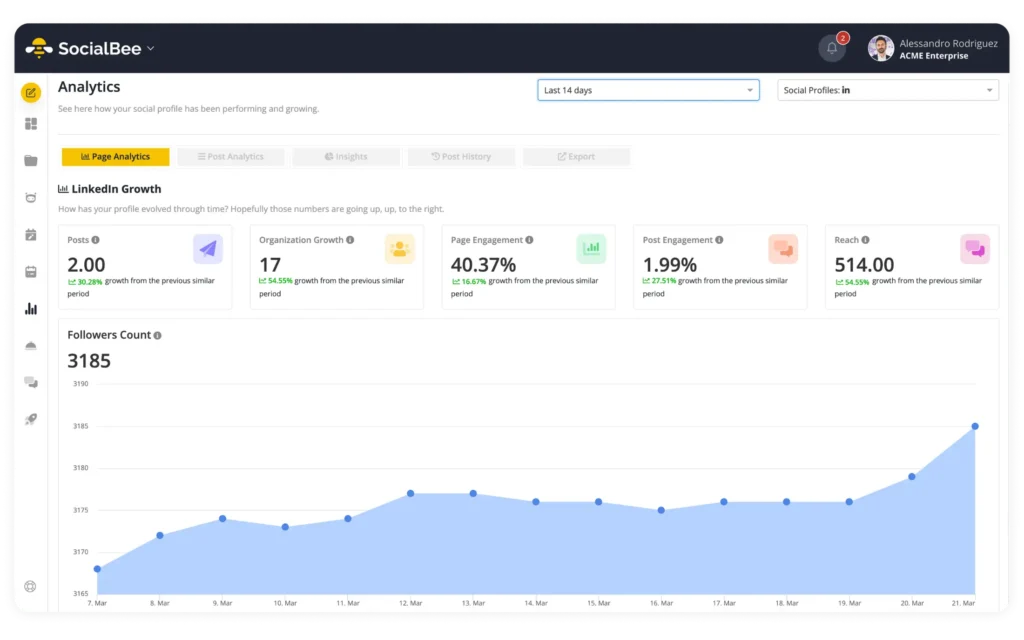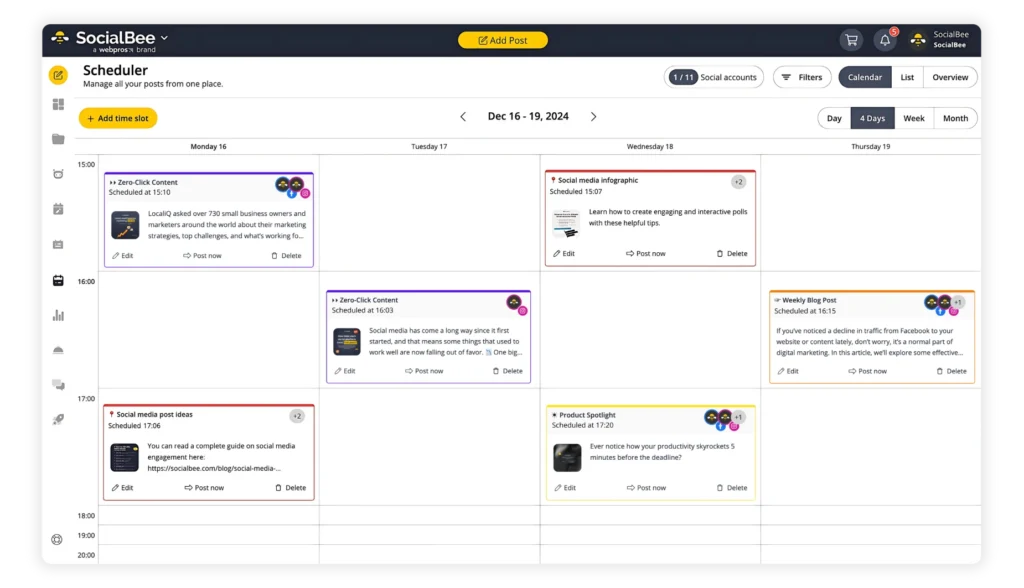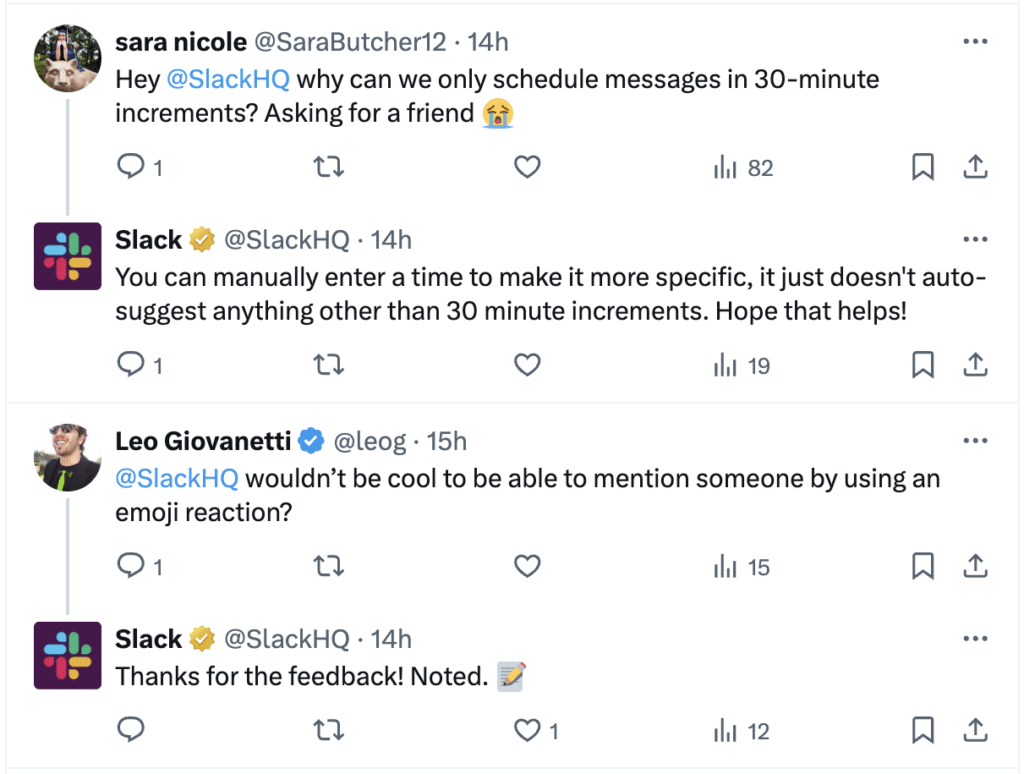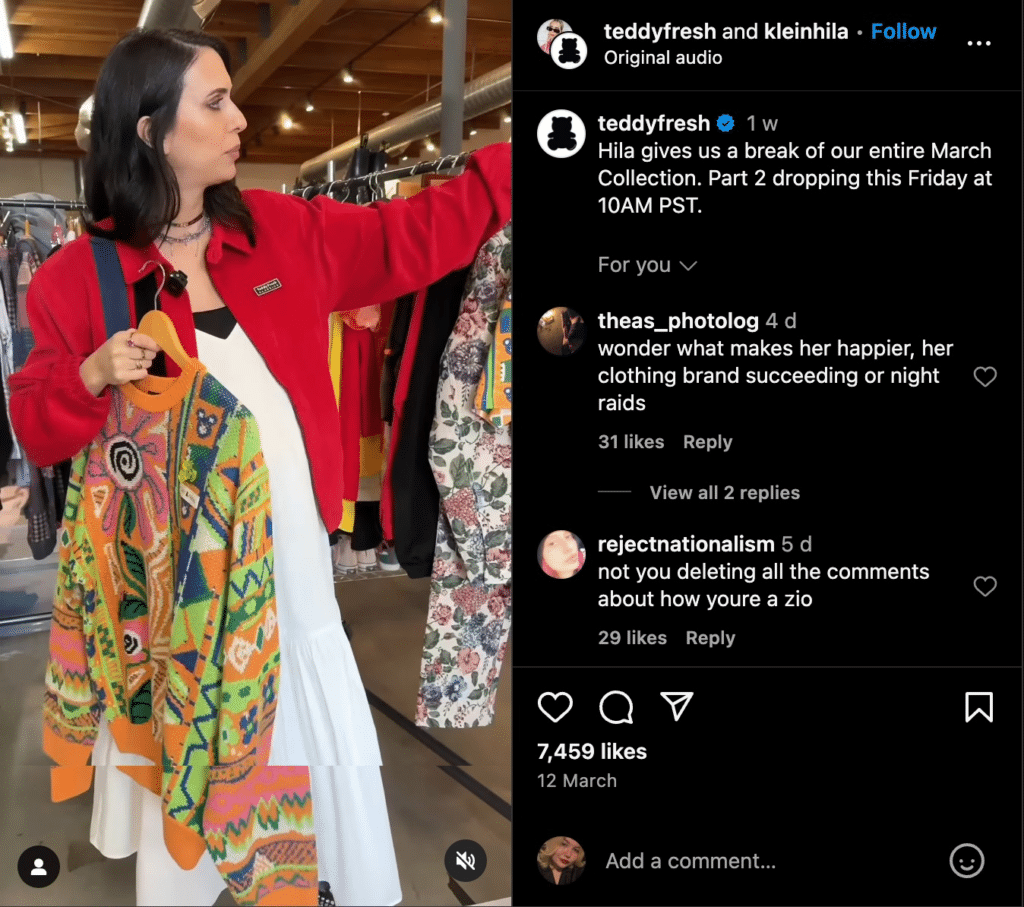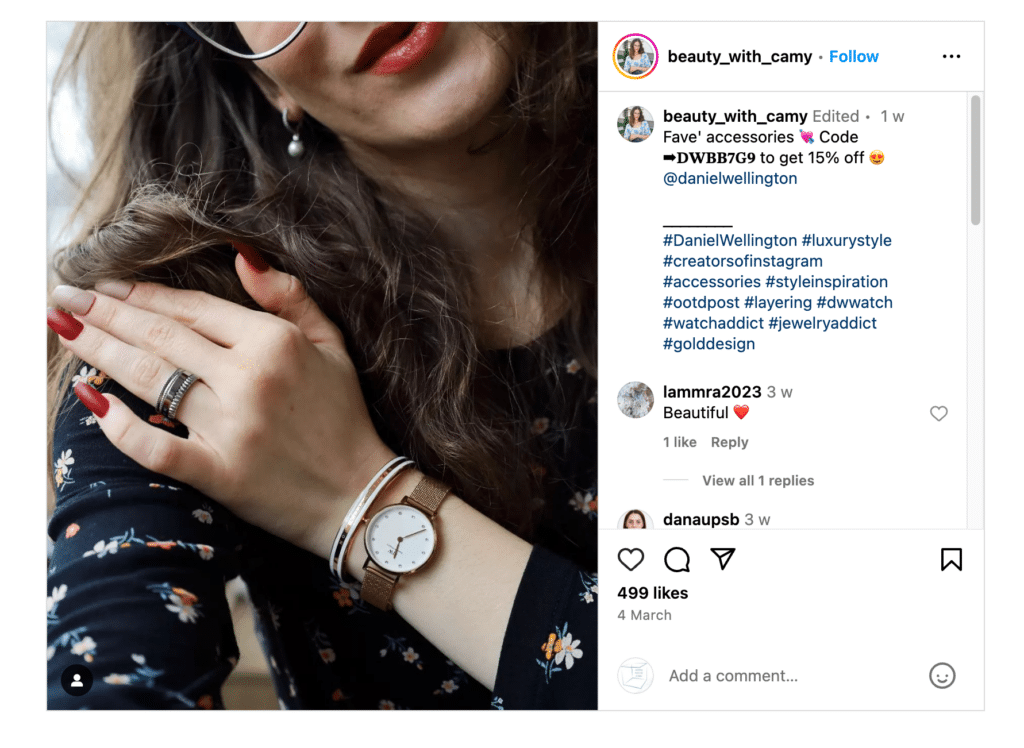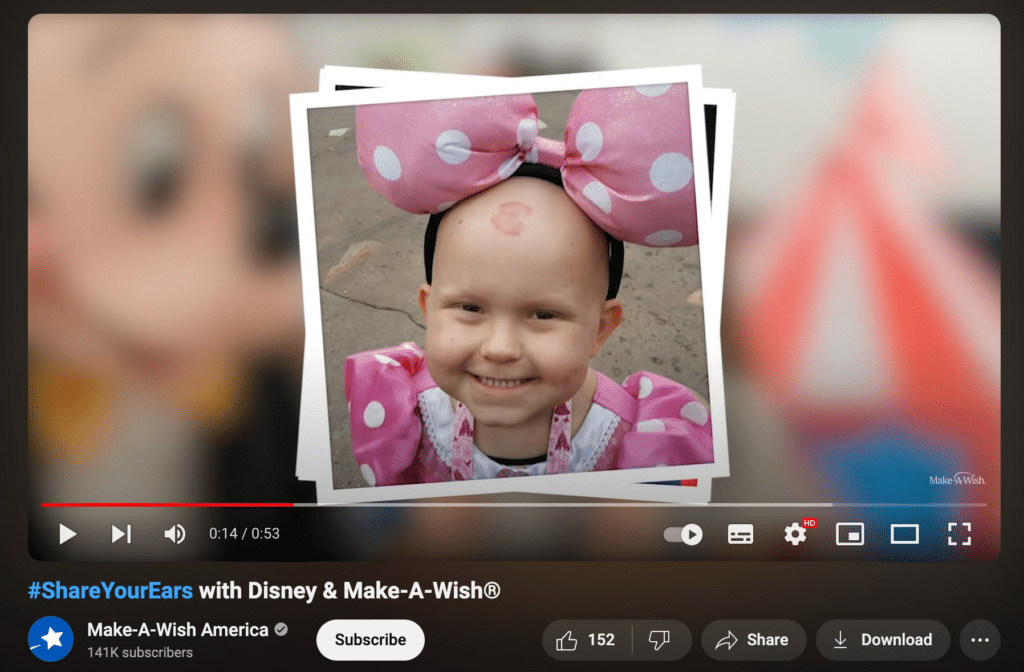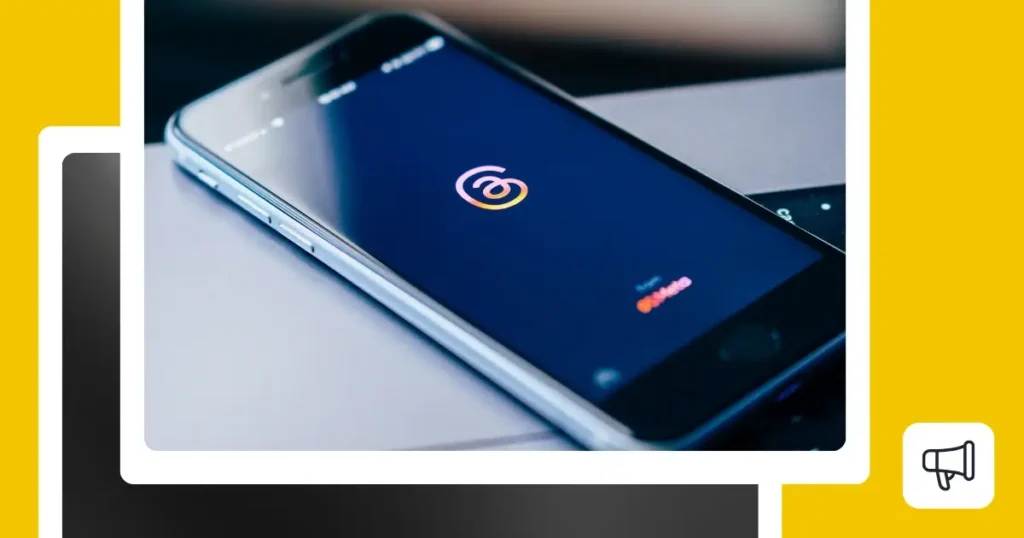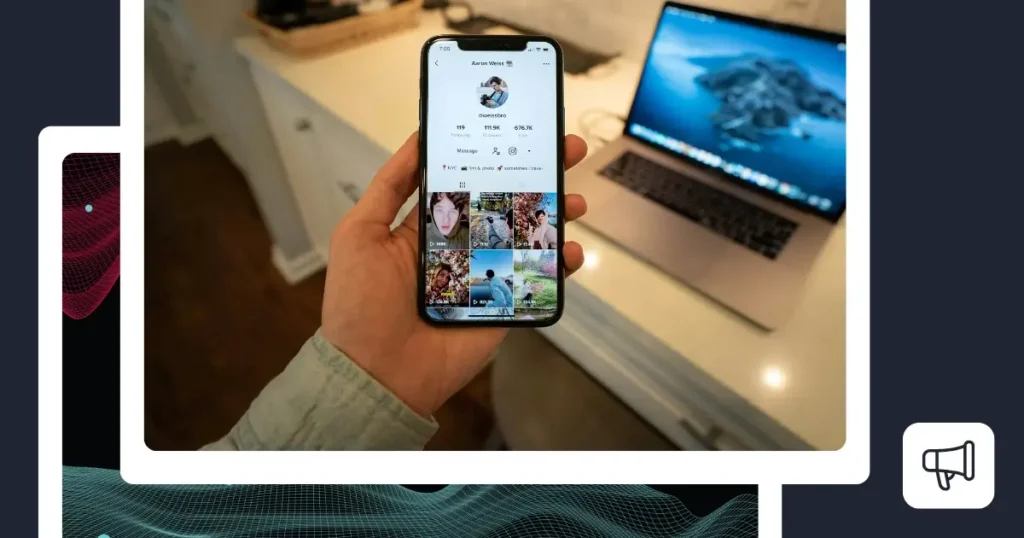
Content Writer at SocialBee
Have you ever wondered how experts juggle the complexities of social media campaign management? Well, it’s not as hard as it seems!
This article is your comprehensive guide to understanding the intricacies of social media campaign management from the experts’ perspective. It delves into the best practices, tools, and strategies that top marketers employ to design and execute winning social media campaigns.
Stay tuned as we explore this and more, providing you with actionable tips to refine your social media management skills!
We’re SocialBee LABS SRL, part of WebPros. We use the information you provide to share relevant content and product updates, as outlined in our Privacy Policy. You can opt out anytime.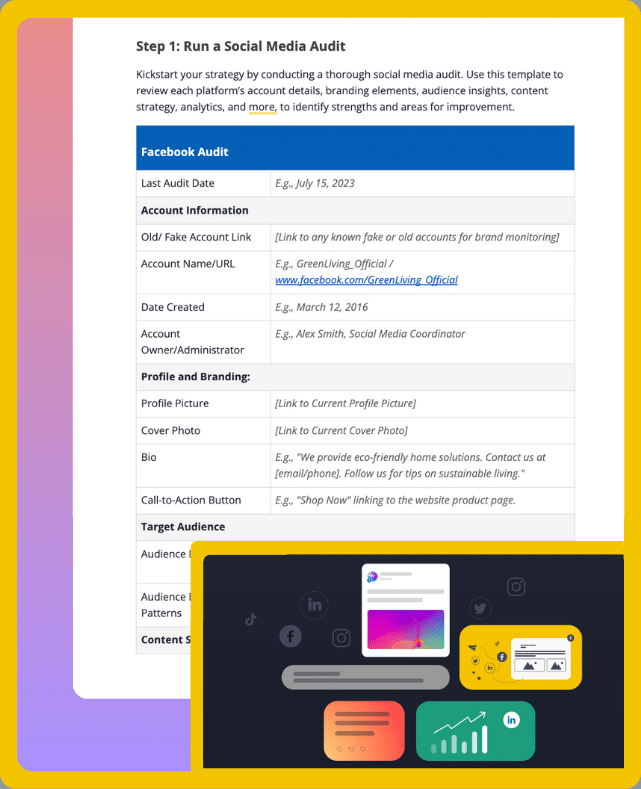
Short Summary
- The foundation of any successful social media campaign is setting clear, measurable, achievable, relevant, and time-bound (SMART) goals. This step guides all subsequent actions, from content creation to resource allocation, ensuring efforts are focused and outcomes can be accurately measured.
- Crafting detailed buyer personas based on real data and insights about your target audience is crucial. It informs the creation of content that resonates deeply with your audience, improving engagement and conversion rates.
- Efficient social media campaign management requires the right tools. Platforms like SocialBee simplify scheduling, content organization, engagement tracking, and analytics, making it easier to manage multiple accounts and ensure consistent, high-quality interactions with your audience.
- Active engagement with your audience through timely responses, personalized interaction, and community building fosters a positive brand image and encourages user participation.
- Continuously tracking the performance of your social media campaigns against your initial goals is essential. Use analytics tools to assess engagement rates, reach, conversions, and other key performance indicators.
What Are Social Media Campaigns?
Social media campaigns are strategic marketing efforts conducted on various social platforms to achieve specific objectives.
These can include increasing brand awareness, promoting products or services, engaging with a target audience, or driving sales.
Besides focused goals, campaigns stand out for their specific messaging and use of social media features and analytics to reach and engage a desired demographic effectively.
Unlike everyday social media activity, these campaigns are often time-bound and revolve around a central theme, message, or call to action.
They utilize a mix of content forms—such as videos, images, and posts—to resonate with the audience on platforms where they spend a significant amount of time.
Effective campaigns are meticulously planned, from content creation to scheduling, and are optimized based on real-time feedback and analytics to maximize reach and engagement.
10 Steps for Efficient Social Media Campaign Management
Let’s start from the beginning, shall we? How does one craft an effective social media marketing campaign?
These are the 10 steps you need to take in order to craft a successful social media campaign:
- Set your social media campaign goals
- Build your buyer persona
- Analyze your current social media presence
- Set the duration and timing of your campaign
- Choose the right social media channels
- Craft targeted social media posts
- Use a social media management tool
- Engage with your audience’s reactions
- Make sure to avoid crisis situations
- Track your performance
1. Set Your Social Media Campaign Goals
To kick off a successful social media campaign, the first and most actionable step is to clearly define your campaign goals. These goals are the cornerstone of your social media marketing strategy and will dictate how you allocate resources and measure success.
To ensure your social media marketing goals are both focused and effective, follow these actionable steps:
- Identify your objectives: Determine what you want to achieve. Common business goals include increasing brand awareness, driving traffic to your website, enhancing engagement, or boosting sales and leads.
- Make your goals SMART: Ensure each goal is Specific, Measurable, Achievable, Relevant, and Time-bound. For example, instead of a broad goal like “get more followers,” set a specific target: “Gain 500 new followers on Instagram within two months by posting engaging content twice daily.”
- Align goals with your overall marketing strategy: Your social media campaign should complement your overall marketing efforts. Ensure your goals support broader business objectives.
- Outline key performance indicators (KPIs): Identify which metrics will serve as indicators of your campaign’s success. These could include metrics like engagement rate, click-through rate, or conversion rate.
- Benchmark and measure: Before you start, understand your current social media performance to set realistic goals. Use this as a baseline to measure progress.
Incorporating these steps into the planning phase of your social media campaign ensures that your efforts are targeted and measurable, setting the stage for a focused and strategic approach to your social media marketing.
2. Build Your Social Media Buyer Personas
Building your buyer persona is a vital step that informs your social media marketing efforts, ensuring they resonate with your target audience. A well-defined buyer persona helps tailor your social media strategy to the needs, behaviors, and preferences of your ideal customers.
For most businesses, aiming to create 3 to 5 buyer personas strikes a good balance. This range allows you to cover the diversity within your target audience without overcomplicating your marketing strategy.
Here’s how to craft a buyer persona:
- Gather data: Collect information on your existing customers and followers through surveys, social media analytics tools, and customer feedback. Look for patterns in demographics, interests, and online behavior.
- Identify pain points and interests: Understand the challenges, questions, and interests of your target social media users. What are they passionate about? What problems do they need solutions for?
- Create detailed persona profiles: Draft detailed profiles for your ideal customers. Include demographic information, interests, behavioral traits, and social media usage patterns. Give them names to make them more relatable.
- Tailor your content: Use the insights from your buyer personas to craft content that speaks directly to their needs and interests. Personalized content is more likely to engage and convert.
- Refine your social media strategy: Continuously use feedback and social media engagement metrics to refine your buyer personas. This will help in fine-tuning your social media strategy over time, ensuring your marketing efforts remain relevant to your audience.
Implementing these steps will help ensure that your social media marketing efforts are targeted and effective, leading to higher engagement rates and better conversion outcomes.
Understanding your audience at this granular level allows for a more nuanced and successful approach to engaging with social media users.
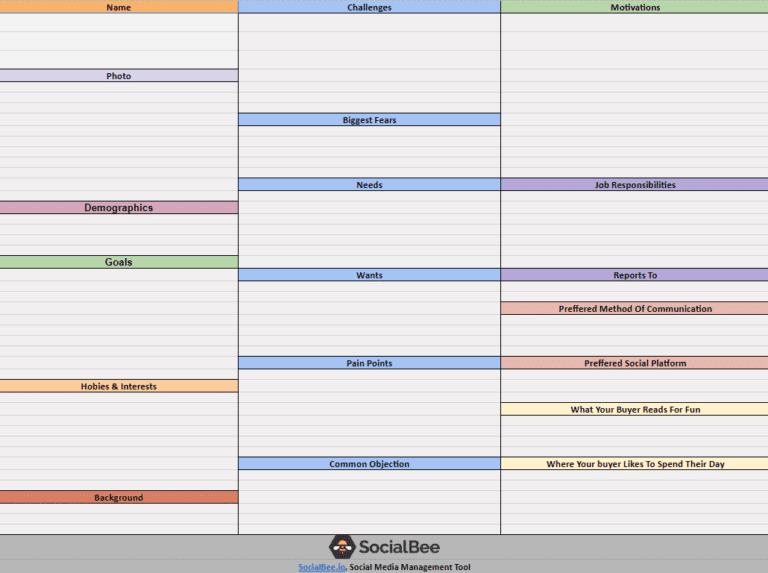
3. Analyze Your Current Social Media Presence
Analyzing your current social media presence is a crucial step for social media marketers aiming to refine their strategy and enhance their overall social media efforts. This analysis provides a clear picture of where you stand and highlights areas for improvement.
Here’s how you can analyze your social media performance:
- Audit your accounts: Review all your social media accounts. Look for consistency in branding, voice, and engagement across different platforms. Ensure your profiles are complete and optimized for search.
- Evaluate engagement metrics: Examine likes, shares, comments, and other forms of engagement to understand what content resonates with your audience. High-performing content can offer insights into your audience’s preferences.
- Compare against competitors: Analyze your competitors’ social media presence. Note what they are doing well and where they might be falling short. This can reveal opportunities for your own strategy to capture attention in areas they may overlook.
- Assess platform performance: Not all social platforms may be relevant for your audience. Evaluate which platforms are yielding the best ROI in terms of engagement and conversions. This can help you decide where to focus your social media efforts.
- Identify gaps and opportunities: Look for gaps in your content strategy or areas where your competitors are not active. This can help you identify new opportunities to engage with your audience.
- Set benchmarks for improvement: Based on your analysis, set specific benchmarks for improvement. These could relate to increasing follower count, boosting engagement rates, or improving content quality.
You can use SocialBee, your AI-powered social media management platform, to get a general overview of your current social media performance. Keep track of best posting times, engagement rates, and audience demographics from one single dashboard.
Monitor all your social media channels from SocialBee and learn how to improve your performance in real-time.
4. Set the Duration and Timing of Your Social Media Campaign
Setting the duration of your campaign is a pivotal decision for any social media marketer.
It determines how long your content and messages will actively circulate across your chosen social channels. The length of your campaign can significantly impact its effectiveness and should align with your overall social strategy objectives.
While it’s important to set an initial timeline, remain flexible. Be prepared to extend successful campaigns or cut short those that aren’t meeting expectations. Continuous monitoring and adaptability are key.
Additionally, think carefully about timing. Launch your campaign when it’s most likely to resonate with your audience. This could be tied to specific events, seasons, or times when your target audience is most active online.
Getting the timing right can significantly enhance your campaign’s visibility and engagement.
Let’s take an example. For a product launch campaign on social media, aim for a concise yet impactful duration of about 4 to 6 weeks:
- Start with two weeks of teasers to build anticipation.
- Then launch with a big reveal in the third week, engaging deeply with your audience.
- Follow up with two weeks of sustained engagement, highlighting different aspects of the product and sharing user-generated content.
- Conclude with a review in the sixth week, ready to extend if the buzz continues.
Timing your campaign to match when your audience is most active—like evenings and weekends for consumer products on Instagram—can dramatically boost engagement. Adjust as you go, based on real-time feedback and engagement metrics.
5. Choose the Right Social Media Channels
Choosing the right social media channels is fundamental to the success of your next social media campaign.
With multiple platforms available, it’s essential to select those that align best with your social media marketing goals, target audience, and the nature of your campaign content. Not every social media channel will be suitable for every campaign.
Here’s how you can choose the right channels for your social media marketing campaign:
- Align with campaign goals: Each social media platform offers unique advantages depending on your campaign goals. Use Instagram and Facebook for brand awareness, LinkedIn for B2B lead generation, Instagram and TikTok for product launches, Twitter for community engagement, and Facebook for customer service.
- Evaluate content compatibility: Consider the nature of your campaign content and which platform(s) it fits best. Videos may perform well on YouTube and TikTok, while thought leadership articles might resonate more on LinkedIn.
- Assess resource allocation: Managing a presence on multiple platforms requires significant resources in terms of content creation and engagement. Evaluate your capacity to maintain a consistent, high-quality presence on all your social channels chosen for the campaign.
- Test and learn: If resources allow, consider testing smaller campaigns on various platforms to see where you get the best engagement and ROI. Use these learnings to inform channel selection for larger campaigns.
By carefully selecting the right social media channels for your campaign, you ensure that your social media marketing efforts are concentrated where they will have the most impact.
This strategic approach maximizes the effectiveness of your campaign content, helping you achieve your desired outcomes across all your social channels.
6. Craft Targeted Social Media Posts
Crafting targeted social media posts is a critical component of your social media campaign strategy.
To ensure your messages resonate with your audience and achieve your desired outcomes, it’s essential to create posts that are carefully tailored to both your social media targets and the characteristics of the major social networks you’re using.
Here’s how to create engaging content targeted for your campaign:
- Leverage a social media calendar: A social media content calendar is invaluable for planning and organizing your posts. It ensures a consistent posting schedule, helps balance different types of content (e.g., promotional, educational, entertaining), and aligns post timing with key dates and events relevant to your campaign.
- Create platform-specific content: Tailor your posts to fit the unique format, style, and user expectations of each social network. What works on Instagram, a platform geared towards visual content, may not resonate as well on X (formerly known as Twitter), where concise and witty text posts often perform better.
- Incorporate visuals: High-quality images, videos, infographics, and other forms of visual content can significantly increase engagement. Visuals are often more effective than text alone in capturing attention and conveying your message.
- Optimize for performance: Use hashtags, keywords, and tagging strategically to increase the reach and discoverability of your posts. Monitoring what works can provide insights for future content.
7. Use a Social Media Management Tool
Using a social media management tool is essential for streamlining your processes, allowing you to efficiently schedule posts, organize your media library, and create content that resonates with your audience.
These tools are invaluable for managing multiple accounts across different platforms, ensuring your social media strategy is executed seamlessly.
Here’s how to leverage social media management tools to your advantage:
- Schedule posts in advance: One of the key features of social media management tools is the ability to schedule your posts ahead of time. This helps maintain a consistent posting schedule, ensuring your audience receives regular updates and engagement opportunities.
- Organize your media library: A well-maintained media library within your management tool allows for quick access to images, videos, and other assets. This organization aids in the rapid creation and sharing of visual content, keeping your posts dynamic and engaging.
- Streamline content creation: These tools often provide features that aid in content creation, such as AI, templates and integration with design tools. This can significantly reduce the time and effort required to create compelling posts.
- Monitor engagement and analytics: Beyond scheduling and content creation, social media management tools offer comprehensive analytics and engagement tracking. This data is crucial for understanding what content performs well and refining your strategy accordingly.
- Collaboration features: Many tools offer collaboration features, allowing teams to work together on content creation, approval processes, and campaign strategies. This ensures a unified approach to your social media presence.
Simplify Your Social Media Management with SocialBee
SocialBee is your AI-powered social media management tool designed to simplify your content creation and posting. It offers a space where you can collaborate with your team, engage with your audience, and analyze content performance from one place.
Schedule and publish your content across your social media platforms with ease from SocialBee.
Here’s a breakdown of SocialBee’s standout features for your social media marketing strategy:
- Supported platforms: Multi-platform support including Facebook, Instagram, Threads, X (Twitter), LinkedIn, Pinterest, Bluesky, Google Business Profile, TikTok, and YouTube. This wide range ensures you can manage nearly all your social media profiles from one place.
- Visual integrations: Use integrations with Canva, Unsplash, and GIPHY to easily open, preview, and import the visuals you need into SocialBee, so you can build posts without switching between multiple tools.
- AI post generator: Leverage our AI Post Generator to craft both captions and images, streamlining the content creation process and enhancing creativity.
- Social Media Copilot: Gain access to your own social media manager, which provides insights and recommendations to help you refine and develop your social media strategy.
- Content categories: Organize your content into distinct categories for a balanced content mix, ensuring your social media feeds remain diverse and engaging.
- RSS feed connection: Automatically import content from any blog’s RSS Feed into your social media posts, keeping your content fresh and up to date.
- Customization for each network: Tailor your posts for each social network to optimize engagement and fit platform-specific nuances, enhancing the effectiveness of your content.
- Automatic hashtags: Generate hashtags automatically based on your images or captions, ensuring your posts are discoverable and relevant.
- Post recycling and expiration: Manage evergreen content with recycling options or set expiration for time-sensitive posts, maintaining a relevant and engaging social media feed.
- Calendar-like posting schedule: Plan your posting schedule with a calendar view, enabling you to visualize and organize your content strategy effectively.
- Upcoming posts overview: Get a snapshot of your next 100 social media posts, helping you stay organized and make necessary adjustments.
- Workspaces and collaboration: Benefit from multiple workspaces and collaboration features, allowing team members to contribute and coordinate seamlessly.
- Engagement features: Directly engage with followers’ comments or mentions from within SocialBee, fostering a responsive and interactive social media presence.
- Best posting time recommendations: Take advantage of SocialBee’s recommendations for the best posting times. These suggestions are based on when your audience is most active and engaged, ensuring your launch content receives maximum visibility and interaction.
“I have used several companies for social media management in the past, and SocialBee has been by far the most versatile and user-friendly.
I would have a panic attack if they ever went out of business. SocialBee makes it easy to have one person managing social media 24/7. “
Natasha Laity Snyder, Founder at Sketchbook Skool
8. Engage with Your Audience’s Reactions
Engaging with your audience’s reactions is a pivotal aspect of social media management that centers around fostering meaningful social interactions, divided across comments, likes, shares, and direct messages.
This engagement is not just about acknowledging these reactions; it’s a strategic approach to gain valuable insights, enhance community building, and strengthen your brand’s presence online.
Here’s how to effectively engage with your social media audience in your future campaigns:
- Monitor all forms of engagement: Keep a close eye on all types of social interactions your content receives. This includes comments, mentions, and direct messages, which can be monitored with SocialBee’s Social Inbox. Each form of engagement offers unique insights into how your audience perceives your brand.
- Respond promptly: Timeliness in responding to comments and messages can significantly impact your community’s perception of your brand. Prompt responses show that you value your audience’s input and are committed to maintaining an open line of communication.
- Personalize your responses: Avoid generic responses. Personalizing your replies can make your audience feel valued and seen, which is crucial for community building. Use their names if possible and tailor your response to the specific feedback or question.
- Encourage conversation: Use your engagements as opportunities to start or continue conversations. Ask follow-up questions, share additional insights, or simply show appreciation. This not only enhances engagement but also deepens your relationship with your audience.
- Gather customer insights: Pay attention to the feedback, both positive and negative, you receive through social interactions because it can guide improvements in your products, services, or content strategy.
- Highlight user content: Showcasing user-generated content or highlighting positive interactions can encourage more of your followers to engage. It demonstrates your appreciation for your community and can inspire more active participation.
- Use insights for future content: Analyze the patterns in your audience’s reactions to inform your future content creation. Understanding what resonates with your audience can help you produce more of what they love and less of what they don’t.
Take a look at how Slack is engaging with its Twitter audience:
They’re making sure each mention is addressed, and that the social media user’s feedback is taken into account.
9. Make Sure to Avoid Crisis Situations
Navigating social media requires a proactive approach to avoid potential crises that can harm your brand’s reputation.
Here are key strategies to minimize risks for your next social media campaign:
- Implement a social media policy: Establish clear guidelines for what is and isn’t acceptable on your brand’s social channels. This includes content guidelines, response protocols, and escalation procedures for sensitive issues.
- Monitor mentions vigilantly: Use social media monitoring tools to keep an eye on what’s being said about your brand across platforms. Early detection of negative sentiments or misinformation allows for quicker responses.
- Prepare crisis communication plans: Have a crisis communication plan in place, detailing steps to take, who to involve, and how to communicate during different types of crises. Quick, coordinated responses can significantly reduce potential damage.
- Educate your team: Ensure that anyone involved in your social media efforts understands how to handle sensitive situations. Regular training and clear communication channels are crucial.
- Listen and apologize when necessary: If a mistake is made, a sincere apology can go a long way in mitigating backlash. Be transparent about the steps being taken to address the issue.
10. Track Your Performance
Measuring the success of your social media efforts is essential for understanding their impact and guiding future strategies.
Here’s how to effectively track your social media campaign’s performance:
- Use analytics tools: Leverage the analytics tools provided by social media platforms, as well as third-party tools, to track your performance. These tools can offer insights into engagement, reach, audience demographics, and more.
- Regular reporting: Develop regular reporting intervals (weekly, monthly, quarterly) to review your performance. This helps in recognizing trends, adjusting strategies, and communicating success to stakeholders.
- Analyze and adjust: Use the data from your reports to understand what’s working and what isn’t. Be prepared to adjust your strategies based on these insights to improve future performance.
- Benchmark against goals: Continuously benchmark your performance against your initial goals. This not only shows progress but also highlights areas needing improvement.
Types of Social Media Marketing Campaigns + Examples
Social media campaigns come in various forms, each tailored to meet specific marketing objectives and resonate with target demographics.
Let’s take a look at four types of social media campaigns:
- Product launch campaign
- User-generated content (UGC) campaign
- Influencer collaboration campaign
- Awareness and social cause campaign
1. Product Launch Campaign
A product launch campaign is essentially about showcasing your new product in a compelling way, combining creative content, strategic timing, and storytelling to illustrate its value.
Such a campaign is meant for creating excitement and building anticipation, making sure your audience understands why this product matters in their lives, all while keeping the message clear, engaging, and directly relevant to them.
Here are some post ideas for your next product launch campaign:
- Countdown teasers: Build anticipation with a countdown series that teases different product features leading up to the launch day.
- “Sneak peek” stories: Use Instagram or Facebook Stories to give sneak peeks of the product or its development process, fostering curiosity and engagement.
- Customer testimonials: Share early reviews or testimonials from beta testers highlighting the benefits and real-life application of the product.
- Interactive product demos: Create live or recorded product demonstrations that allow your audience to see the product in action and ask questions in real-time.
- Launch day event: Host a virtual launch event on social media, including unboxing, Q&A sessions, and special launch day promotions.
Take a look at how Teddy Fresh has launched their new collection:
A. Best Practices to Boost Results of Product Launch Campaigns
Here are some tips to keep in mind when creating your next launch social media campaign:
- Leverage teaser visuals: Start with teaser visuals that are not only high-quality but also mysterious enough to spark curiosity. Use imagery that hints at the product’s benefits and aligns with its branding, setting the stage for the big reveal.
- Time your teasers and launch: Analyze your target audience’s social media habits to determine the optimal times for posting. Begin with teaser posts leading up to the launch day, scheduled during peak activity hours, to ensure maximum engagement and anticipation.
- Create interactive launch countdowns: Utilize countdowns on your social media platforms, encouraging your audience to engage and share. This not only builds anticipation but also keeps your audience checking back for the big reveal.
- Host a launch day Q&A: On launch day, conduct a live Q&A session where you answer questions, address feedback, and showcase the product’s features and benefits in real-time. This direct engagement can enhance community feeling and drive interest.
B. How to Monitor Product Launch Campaigns
To effectively monitor Product Launch campaigns, focus on these specific metrics:
- Launch day metrics: On launch day, closely monitor real-time metrics like engagement rate spikes, hashtag usage, and direct traffic to your product page. These immediate indicators can signal the initial success of your launch.
- Conversion tracking: Use tracking URLs and analytics platforms to specifically monitor conversions attributed to the launch campaign. This includes sales, sign-ups, or downloads directly resulting from social media activities.
- Sentiment analysis: Employ social listening tools to analyze sentiment around your product launch. Look for changes in sentiment pre and post-launch, focusing on customer excitement, concerns, or any misunderstandings about the product.
- Post-launch review: Within the first week after launch, conduct a comprehensive review comparing your KPIs against benchmarks set before the campaign. This review should include sales data, social media metrics, and overall market response.
2. User-Generated Content (UGC) Campaign
User-generated content campaigns leverage the creativity and voice of your audience to create authentic content that resonates with wider communities. These campaigns can significantly enhance brand loyalty, engagement, and trust when executed and monitored effectively.
Here are some ideas of posts you can collect through an UGC social media campaign:
- Photo challenges: Ask your audience to post photos of them using your product in creative ways or in specific locations, tagging your brand.
- Story shares: Invite followers to share stories about their experiences with your product or service, whether it’s a short video testimonial or a written post.
- “A Day With” series: Encourage users to document their day with your product, showing how it integrates into their daily lives.
- Before and after: For products that offer a transformation or improvement, ask customers to share before and after shots, showcasing the effectiveness of your product.
A couple years ago, Starbucks launched a unique UGC campaign inviting customers to doodle on their white Starbucks cups and submit pictures of their artwork through email entries instead of using a hashtag on social media.
The winning design was then adapted into a limited edition Starbucks cup.
A. Best Practices to Boost Results of UGC Campaigns
Here are some of the best practices for running a successful UGC social media campaign:
- Clear guidelines and themes: Provide clear instructions and themes for the UGC you want to collect. This ensures the content is aligned with your campaign goals and brand image.
- Incentivize participation: Offer rewards, discounts, or the chance to be featured on your main social media channels as incentives to encourage more submissions.
- Promote across channels: Don’t limit promotion to just one platform. Use all your social media channels, email newsletters, and websites to promote the UGC campaign.
- Regular engagement: Actively engage with the UGC by liking, commenting, and sharing. This not only boosts visibility but also encourages more participation.
B. How to Monitor UGC Campaigns
To monitor your UGC campaign, keep in mind these tips:
- Analyze engagement metrics: Look at likes, comments, shares, and mentions related to the UGC. High engagement rates can indicate a successful campaign.
- Monitor sentiment: Assess the sentiment of the content being posted. Positive sentiment can enhance brand perception, while negative sentiment offers insights into areas for improvement.
- Evaluate conversion rates: If your UGC campaign has a specific call to action (e.g., visit a website, or sign up for a newsletter), track how many conversions are generated from user-generated posts.
- Content quality: Assess the quality of content being shared. High-quality UGC can be repurposed for future marketing materials, providing value beyond the campaign itself.
3. Influencer Collaboration Campaign
Influencer collaboration campaigns leverage the credibility and reach of influencers to promote your brand or product. When done correctly, they can significantly enhance brand awareness, engagement, and conversions.
Here are some popular influencer marketing campaign post ideas:
- Day in the life: Influencers showcase a day in their life using your product, highlighting its benefits and versatility in everyday scenarios.
- Unboxing experience: Capture the influencer’s genuine reaction and excitement as they unbox your product for the first time, creating anticipation among their followers.
- Tutorial or how-to guides: Influencers create step-by-step tutorials on how to use your product, offering practical value to the audience.
- Before and after: Particularly effective for beauty, fitness, or home improvement products, influencers show the transformation or impact your product has made.
- Challenge videos: Influencers participate in or create a challenge involving your product, encouraging their followers to join in, and fostering engagement and virality.
- Giveaways and contests: Collaborate on a giveaway where followers must follow certain criteria (like following your brand, and tagging friends) to win your product, boosting visibility.
Daniel Wellington, a Swedish watch brand, leveraged influencer collaborations across different scales, from micro to top-tier influencers, to showcase their stylish watches.
The brand provided influencers with watches and a unique discount code for their followers.
A. Best Practices to Boost Results of Influencer Campaigns
Here are some tips for effective social media influencer campaigns:
- Choose the right influencers: Select influencers based on their alignment with your brand values and their audience’s overlap with your target demographic. The quality and relevance of the influencer’s audience are more important than the sheer follower count.
- Set clear objectives and expectations: Be clear about what you aim to achieve with the influencer collaboration, whether it’s increasing brand awareness, driving sales, or launching a new product. Clearly communicate your goals and expectations with the influencer.
- Collaborate on content creation: Work closely with influencers in the content creation process. Their understanding of what resonates with their audience can lead to more authentic and engaging content.
- Leverage multiple content formats: Encourage influencers to use a mix of content formats, such as posts, stories, videos, and live sessions, to maximize engagement and reach.
- Incorporate a strong call to action (CTA): Ensure that the influencer includes a clear CTA in their content, guiding the audience on what steps to take next, whether it’s visiting a website, signing up for a trial, or making a purchase.
- Offer exclusive promo codes or links: Provide influencers with unique promo codes or tracking links. This not only incentivizes their audience to take action but also facilitates the tracking of campaign performance.
B. How to Monitor Influencer Campaigns
To monitor your influencer campaigns, keep in mind the following:
- Track engagement metrics: Monitor likes, comments, shares, and overall engagement on the influencer’s posts related to your campaign. High engagement rates indicate content resonance.
- Use UTM parameters and promo codes: Implement UTM parameters on URLs and unique promo codes shared by influencers. This allows you to track website traffic, conversions, and sales directly resulting from the campaign.
- Monitor reach and impressions: Assess the reach and impressions of the campaign content to understand how widely your message is being disseminated.
- Evaluate audience growth: Keep an eye on any increases in your own brand’s social media followers, website traffic, or email list subscriptions as a result of the influencer campaign.
- Sentiment analysis: Analyze the sentiment of comments and interactions on campaign posts to gauge public perception and reception of your brand or product through the influencer collaboration.
- ROI calculation: Calculate the return on investment (ROI) by comparing the campaign results (conversions, sales) against the costs involved (influencer fees, product costs). This provides a clear picture of the campaign’s profitability and effectiveness.
4. Awareness and Social Cause Campaign
Awareness and social cause campaigns (also known as Corporate Social Responsibility or CSR campaigns) on social media can significantly impact public consciousness and drive meaningful action towards important issues.
Here are some post ideas for your social cause campaign:
- Infographics: Share infographics that break down complex issues into understandable and shareable visuals.
- Personal stories: Feature stories or testimonials from individuals directly affected by the cause, providing a human face to the issue.
- Live discussions: Host live discussions or Q&A sessions with experts to educate and engage your audience about the cause.
- Interactive content: Create quizzes or interactive content that educates about the cause while engaging users in a direct way.
- Challenge tags: Start a challenge or a tag where users can participate in a simple activity related to the cause and tag others to spread awareness.
Disney partnered with Make-A-Wish Foundation for the #ShareYourEars campaign, encouraging users to share photos of themselves wearing Mickey Mouse ears on social media.
For every post, Disney donated to Make-A-Wish.
A. Best Practices to Boost Results of Awareness and Social Cause Campaigns
Here are some tips to make the most out of your CSR campaign:
- Align with relevant causes: Choose causes that align closely with your brand values and resonate with your audience to ensure authenticity and effectiveness.
- Collaborate with NGOs and influencers: Partner with credible NGOs and influencers who are passionate about the cause. Their expertise and audience can amplify your message.
- Educate your audience: Provide valuable and accurate information about the cause. Use your platform to educate your audience on why the cause matters and how they can help.
B. How to Monitor Awareness and Social Cause Campaigns
To monitor your CSR campaign, keep in mind the following:
- Cause-specific action conversion rate: Measures the effectiveness of the campaign in driving actions directly supporting the cause, such as donations or petition signatures.
- Cause awareness reach: Tracks how much the campaign has expanded awareness about the social issue itself, using indicators like mentions of the cause and engagement with campaign-specific hashtags.
- Engagement with educational content: Assesses how effectively the campaign engages audiences with informational content about the cause, through interactions like likes, shares, and comments.
- Community growth and involvement: Monitors the increase in followers or community members actively discussing or participating in activities related to the cause, indicating the campaign’s success in fostering a committed community.
Additional Social Media Resources
Eager to learn more about social media management?
Here are some more social media resources that might interest you:
- Become a social media manager with SocialBee University
- How to Become a Social Media Manager: Expert Tips & Tools
- Why Experts Use Only One Social Media Management Dashboard
- How Social Media Marketing Automation Can Boost Productivity
- The Best Way to Do Social Media Management for Small Business
Frequently Asked Questions
The most effective social media campaigns often include:
- User-generated content campaigns that leverage a specific hashtag to share experiences, building community and brand authenticity.
- Challenges and contests that engage users and increase brand visibility.
- Behind-the-scenes content offering a glimpse into company culture or operations, adding a human touch to your brand.
- Influencer collaborations to broaden your audience with credible content.
- Interactive content, such as polls and quizzes, to engage and understand your audience better.
The social media funnel outlines the journey from brand discovery to advocacy, comprising five key stages:
- Awareness: Attracting attention to the brand or product through broad-reaching content and activities.
- Consideration: Engaging the audience with more detailed information to foster interest and consideration of the brand’s offerings.
- Conversion: Encouraging specific actions like purchases or sign-ups, turning interested individuals into customers.
- Loyalty: Cultivating a positive ongoing relationship to encourage repeat business and deepen customer commitment.
- Advocacy: Leveraging satisfied customers to promote the brand, turning them into vocal supporters and referrers.
To maximize impact on social media, successful campaigns typically employ a mix of strategies:
- Engaging content types to attract audiences
- Influencer collaborations for broader reach
- Targeted paid advertising designed to capture niche audience across social platforms
- Interactive elements like contests to boost engagement
- Promotion of user-generated content for brand authenticity
- Social monitoring for tailoring strategies based on audience feedback
This multifaceted approach ensures a dynamic, engaging, and effective online presence.
Ready to Craft Your Next Social Media Marketing Campaign?
Armed with these expert insights, you’re now better equipped to launch, manage, and optimize your social media campaigns.
Remember, the key to success lies in continuous learning and adapting to the ever-evolving social media landscape. And what better way to put these strategies into practice than with a tool designed to streamline your social media management?
Start your 14-day SocialBee free trial and experience firsthand the impact of expert social media campaign management on your brand’s online presence.


